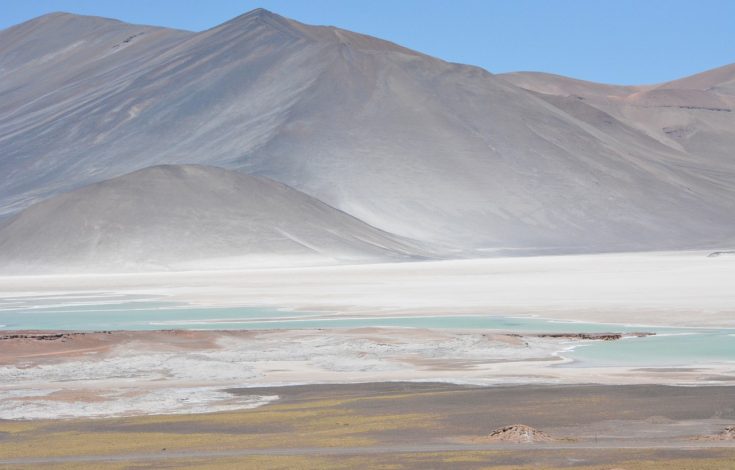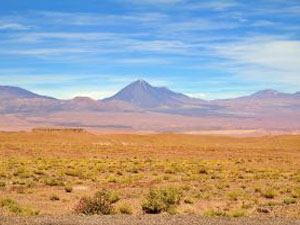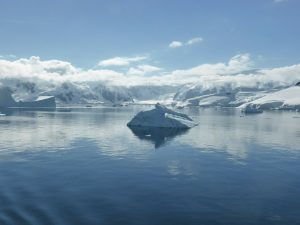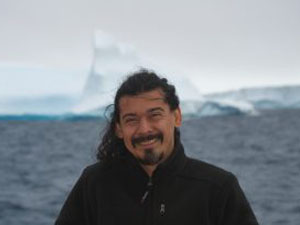The curious similarities and differences between the microorganisms of the Antarctic and the Atacama desert

What do the microorganisms that inhabit the Antarctic and the Atacama Desert have in common? It is one of many questions that we have asked ourselves regarding the nature that surrounds us. It is an interesting question and one that attracts a lot of attention, because it seeks to investigate the existence of microorganisms in two completely different territories: one desert and very hot during the day, in northern Chile; and another with snow, ice and very cold, on the southern continent of planet Earth.
To understand the world of these tiny organisms, PAR Explora Antofagasta team from the Universidad Católica del Norte (UCN), has consulted scientists dedicated to research the microorganisms in the Atacama desert and the Antarctic.
First of all, it is necessary to know the definition of microorganism. Dr. Paris Lavín, assistant professor at the Department of Biotechnology of the Faculty of Marine Sciences and Biological Resources, of the University of Antofagasta (UA), explains “it corresponds to all organisms we can’t see naturally with our eye, and we need to use nstruments such as a microscope”.
Extreme enviroments
Dr. Lavín, who is also a researcher at the UA Antofagasta Institute, comments both Antarctica and the Atacama desert are for people in extreme environments due to their conditions of water availability and their thermal oscillations, ranging from -25 ° C to more than 45 ° in some places at the Atacama Desert, and from -89.2 ° C to 18.3 ° C in Antarctica, according to the scientist, which makes them difficult to inhabit.
“In addition, in both cases the desiccation generated by both evaporation and freezing of water, results in an increase of the concentration of salts in soil. High UV radiation in both places is a great factor affecting organisms as well. On the other hand, in some Antarctic areas, such as the South Shetland Islands, where the soils have a volcanic origin, we can find naturally high concentrations of metals like those found in the Atacama desert, “he says.
Regarding the similarities between the microorganisms that inhabit both environments, Dr. Lavín assures the prevailing conditions select organisms that have the ability to “contour the difficulties generated by both temperature, dryness, UV radiation and high concentrations of heavy metals “;”Therefore, in both cases we are going to find microorganisms capable of forming resistance structures, such as spores, which allows them to wait for the environmental conditions to be more favorable, until they reach the optimum temperature ranges to return to activity. In general, we can find the same groups of predominant microorganisms living in both environments, ” he told us.
Dr. Gonzalo Barriga, virologist at the Institute of Biomedical Sciences of the University of Chile and director of Dr. Virus and the Invisibles, who gave the live talk by PAR Explora Antofagasta, titled “How did the coronavirus got into the microbiological zoo named Chile ? ”, He explains “ One thing we could say that unites them (microorganisms of both territories) is they are extremophiles, which means, they are microorganisms and have the possibility of withstanding very harsh changes, very high temperatures, very high cold temperatures, a lot of UV light, a lot of drying out or a lot of humidity; so that’s something they could share. In general, they need different adaptations to live in those places, but beyond that, they are different, they are adapted to different things. ”


Regarding the main differences of these microorganisms, Dr. Lavín states “the proportion of microorganisms in terms of their physiology adapted to the prevailing temperature ranges in each region can be highlighted, because in the desert the prevailing temperatures during the year are higher than Antarctica, those that can live at temperatures around 10-45ºC, known as mesophilic microorganisms, predominate; while in Antarctica will be more easily to find organisms that can live at lower temperatures of around 0-15ºC, known as psychrophilic or psychrotolerant microorganisms ”.
However, UA scientist assures this does not mean in Antarctica there are no microorganisms that can live at higher temperatures, or there are no microorganisms in the desert that need low temperatures to inhabit. In fact, depending on where we look, we can also find microorganisms who needs temperature ranges above 45ºC. This is the case of thermophilic microorganisms, which can be found in hot spring areas, both in Antarctica and in the Atacama desert.
Bacteria and viruses
Understanding that viruses are smaller than bacteria, Dr. Barriga comments “in general, community knows best about bacteria. Bacteria divide, interact through chemistry with each other, eat each other. Viruses don’t do that. Viruses can’t divide them on their own. So if a virus is in the environment it is considered inactive or, the more technical term would be, dead. But if I take this dead virus and put it inside a cell, this virus is activated because now it has all the tools to live and it divides there. So if I put this virus in Antarctica it will most likely stay static or wait a few years for it to somehow find everything to divide. So it is a good place to stay over time, without further degradation. ”
In this context, Dr. Barriga comments that in 2013 an influenza virus was found in Antarctica. “In other words, there is no other identical virus in the world other than ancient reports of a influenza virus of the 60s. So that means, probably colonies of humans or animals somehow made it to Antarctica and that virus was trapped there and obviously has not come out, it is trapped there yet. It’s kind of like a zoo or cage for ancient pathogens. He adds “now, if we change places, the permafrost -layer of the soil that is permanently frozen-, which is on the other side, in the north (of Chile), it is also said there could be animals with smallpox and that everything could be frozen down. In the Antarctic there was vegetation at some point; there are fossils of vegetation. So obviously if there was vegetation there could have been mammals, if there were mammals it was most likely pathogens. Whether these pathogens were projected or successfully colonized new places, we do not know. So the potential for new pathogens is super high. “
Essential microorganisms for life
Dr. Lavín indicates microorganisms have an important role on the planet and, therefore, in the existence of human beings. “Biogeochemical cycles, such as carbon dioxide uptake, oxygen production, nutrient release from organic dead matter, are controlled by metabolic processes of these microorganisms. In addition, we must think on Earth there are no borders that separate the different aquatic, terrestrial and aerial systems. Therefore, everything that happens in a certain place on the planet will affect other areas sooner or later due to their interconnection.
For example, wetlands or desert salt flats represent a very important ecosystem with a unique diversity of animals and plants that are dependent on a delicate balance sustained by local microbial communities: bacteria, archaea, fungi, microalgae and protozoa. Also, different ethnic groups in Atacama desert still use microorganisms such as nostoc cyanobacteria, known by the name llayta, that proliferate in unique high altitude environments as an additional food source. ”
Likewise, Dr. Lavín also warns about the influence that we have on environments such as Antarctica and the Atacama Desert, by not preserving them, can unleash strong consequences for humanity. “for example, the acceleration of the process of climate change is forcing the ice melting and exposing current environment several areas in Antarctica that were hidden for thousands or millions of years. In this way, just like a science fiction movie, it would not be unreasonable to think that it could result in a ‘pandora’s box’ by bringing microorganisms from the past and turned out harmful to humanity, maybe a new disease or contribution to the process of climate change ”, emphasizes .
And finally he adds “therefore, the preservation of these environments, as well as the study of their microorganisms, allow us to understand not only the importance of the role they play and how their existence or loss could affect us, but also their usefulness as natural resources for biotechnology and the production of new medicines “.
Written by (SPANISH): PARexplora Antofagasta NEWS
Dr Paris Lavín Ph. Cr: Dr. José Manuel Pérez Donoso (UNAB)
Translation: NEXER Outreach Team


